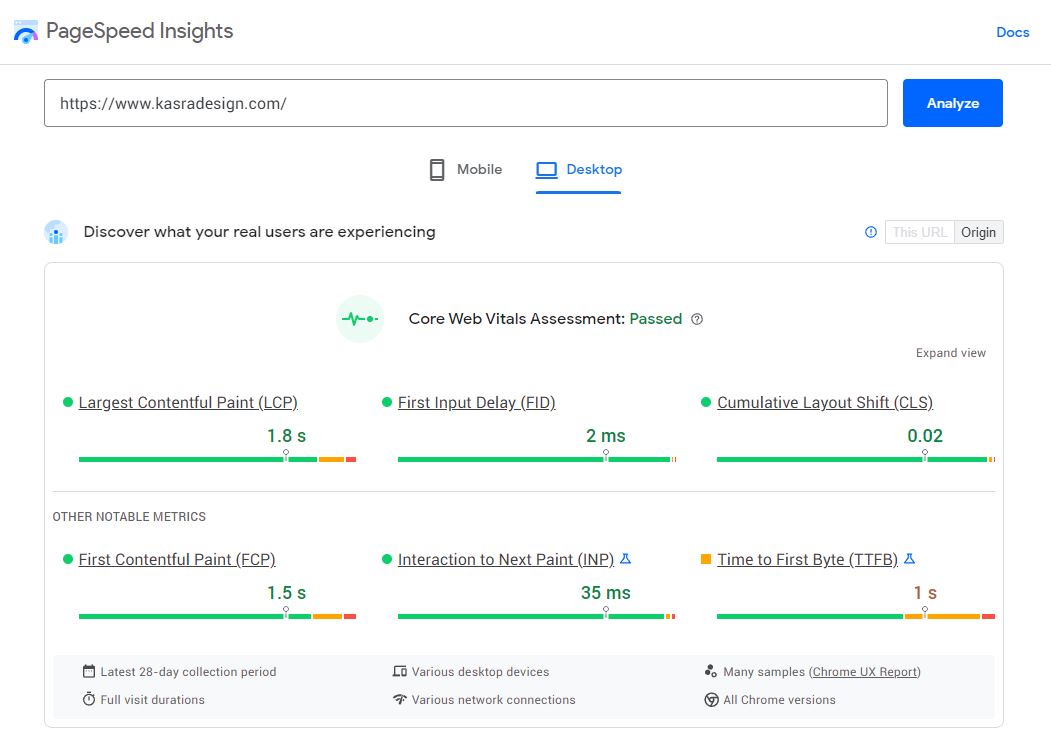Video marketing is becoming more and more popular every year. As numerous studies have shown, it positively impacts business growth. That is why it has become an integral part of the marketing strategy of many companies. According to HubSpot, as many as 86% of marketers reported that video effectively generates leads. But have you wondered how to combine video strategy with SEO marketing strategy? In this article, you will find many valuable video SEO tips to show you how to do it.
What is Search Engine Optimization (SEO)?
Search Engine Optimization (SEO) is optimizing a website for search engines such as Google. It is a marketing strategy that helps you improve the visibility of your website. The more visible your site is to search engines, the more people will find your products, services, and information you provide.
We can divide search engine optimization into two key categories:
- On-site optimization – activities conducted directly on the positioned website to improve quality and visibility to search engines;
- Off-site optimization – the factors outside the website responsible for its positioning.
How to create a video SEO strategy?
- Define your video goals: As a first step, you need to consider your primary goal of including videos in your marketing strategy. It could increase brand awareness, gain more conversions, generate social shares, and more. It should relate to your business needs.
- Find your target audience – the next step is to get as much information as possible about your target audience. It is essential to learn:
- Where do they search and spend time online?
- Where do they search for information?
- What are their search intents?
- What type of content do they consume?
The answers to these questions will help you decide on the right actions to help you reach your goal and achieve the best possible conversions.
- Choose the right hosting platform: Another important step of any video marketing strategy is choosing a video hosting platform. You can choose to upload videos on your website or use an external third-party platform such as YouTube or Vimeo.
If the file is large and long, it may slow down your site. In this case, publishing it on a hosting platform is a better option, and do not forget to add a link to your website.
- Find your distribution channels: The final step is to choose how to promote your video. You can schedule paid social media campaigns or buy paid ads on hosting platforms. You can also start working with influencers who will reach your audience by sharing your video on their social media profiles or websites. Another good idea is starting with organic promotion on Facebook groups or online forums.
How to Integrate Video Into SEO Marketing Strategy
You already know how to plan a video marketing strategy, so now the question is: How to integrate these activities into your SEO strategy? Follow these steps to maximize your business benefits.
1. Perform Keyword Research
Keyword research is usually the first step in developing an SEO strategy. The case is the same with video SEO strategy. The process involves researching online user trends, histories, and additional analytical data to create a list of terms and phrases related to the services and products that you offer. The gained information allows you to learn and understand what words your target audience uses when searching for a video similar to yours. Proper keyword matching will help you increase your CTR (click-through rate) in both organic search and paid results.

You can use the keyword suggestions tool offered by SE Ranking to find keywords relevant to your video. After entering a keyword, the tool shows keyword difficulty, search volume, keyword ideas, organic search results, and most popular ads for the analyzed keyword.
In Keyword Suggestions, you can see a list of keywords worth using in your SEO strategy. Interestingly, you can filter out only those keywords that appear in video SERP features. Pay particular attention to Search Volume, as it shows you how many people are searching for that keyword phrase per month.
2. Optimize your video for technical SEO
Once you know what keywords will be important in your video SEO marketing strategy, you should tackle the technical issues related to your site settings. To complete these steps, you will likely need the help of a software developer who will be able to verify the structure and setup of the backend of your website’s technical construction and then make any changes.

To do this, follow the steps:
- Check meta robots tags: Make sure that your website is not blocking crawlers with a robots.txt file or meta robots tags.
- Use HTML tags for SEO: Choose correct HTML tags optimized for keywords.
- Optimize your images to allow search engines to index them correctly. For example, name your image ‘social-media-stats-2022` rather than ‘IMG0001’, and then add a meta title including the relevant keyword.
- Make your website fast: Faster websites rank better. Therefore, you should ensure your website loads in two seconds or less. You can use PageSpeed Insights to check the current speed of your site.
- Find and remove the orphaned pages: Make sure your website does not contain orphaned pages (pages that are not linked to anywhere on your site).
- Add Schema Markup: Schema Markup is a code that helps search engines better understand the content available on your site. To do this, use Schema.org to add a VideoObject tag to your video and include important properties such as actor, caption, director, musicBy, duration, transcript, uploadDate, author, audience, creator, editor, and many more. By adding such information to your video in HTML code, you increase the chances to earn rich snippets on search engine results pages.
- Reduce the number of page redirects: The process of sending redirects causes your website to load slower than it should. To find them quickly, you can use ready-made tools like Google PageSpeed, Redirect Mapper Tool, and Broken Requests Tool.
- Install an SSL certificate: It is now a standard on every website, which lets your users know that your website is verified and safe to browse. Having an SSL today is a must for your website.
- Choose a mobile-friendly theme: Do not forget that most internet users today are mobile users. When adding video to your website, make sure you use a theme that supports viewing video on various devices, including smartphones and tablets.
3. Add Video Transcripts and Closed Captions
Many people prefer to watch movies with the sound turned off. The reasons can be different: they do not want to disturb others (because, for example, they are at work or in a public place), they prefer to listen to music at that time, and many others. By adding subtitles to your video, you can increase your potential audience by making it accessible to everyone.

Adding subtitles also have an SEO benefit, as it makes a website easier to find in a search engine. Bots crawl your video and get additional information about it, verifying its relevance to search queries. It can help your site rank higher because the keywords you used in the subtitles will get your site found faster. Moreover, this action can also help you gain more traffic from a voice search and make your videos accessible to people who cannot listen to them.
To add subtitles to your videos, you can create an SRT file and upload it with your video or use an automatic subtitle generator like VEED.IO or Flixier.
4. Provide Useful Content
To make your video more visible in search, it is worth adding more than just a transcription. It would be a good idea to add additional content to your site that complements or summarizes the most important information from the video. You can start by adding an introduction that explains what information your users will find in the video. You can also add a frequently asked questions section.
No matter how great your idea and content are, it is better to share the video creation progress with the client. You can go a step further and use Wipster to manage your current projects, share videos for review, receive feedback, and track your workflow.
5. Add Metadata and Descriptions
Just like publishing content without video, when adding a new page on your site, you need to remember to fill in the meta title and description. Be sure that the title and description you provide include keywords related to your video and describe what is in it. It will allow search engines to understand your video content faster and rank your site higher. Remember not to use the same exact keywords in different videos, as this will cause them to compete with each other in the search results.
6. Upload an Eye-Catching Thumbnail
The final step is to add an eye-catching thumbnail – an image visible on your video before turning it on. Make sure it is consistent with your brand book, includes your company logo, and encourages users to watch the video. Remember to make sure the image is the proper size for the platform on which you are posting the video. For example, an ideal resolution for YouTube videos is 1280×720 pixels.
Different types of SEO video marketing
When creating a video SEO marketing strategy, you should consider what video content will work best for your business. Your choice should depend on many factors such as your company’s business type, goals, your position in the market, or the company image you want to build or enhance. The most popular video types these days include:
-
- Product videos/demos: Type of content that will help your customers better understand how your product works. They increase interest in your goods and boost conversion rates.
- Explainers: Videos in which you explain the scope of your services/products so customers can better understand if you offer something they need.
- Promotional videos: Advertisements that encourage customers to buy your products or use your services. Their main purpose is to increase sales. They can be useful for paid campaigns.
- Webinars: usually live meetings with customers to educate, build expert image and trust in your brand
- Video tutorials: Videos explaining how to do something using the products you offer.
- Interviews: Conversations with employees, key customers, influencers, or other people on topics related to your business.
- Recruitment videos: Videos encouraging potential employees to join your company
There are of course many more types of video, and the one you opt for should depend on your own goals and preferences.
Summary
As you can see, a video SEO marketing strategy is worth implementing in your business. Video will be a great addition to your marketing efforts, bringing many benefits such as: increasing the number of engaged users, improving conversions, increasing revenue, and even attracting new employees.
About The Author:
Kelly Breland is a Digital Marketing Manager at SE Ranking, all-in-one SEO platform with broad functionality of keyword research, backlink monitoring, and website audit. She likes to cover digital trends, marketing techniques, search optimization, or business strategy in her writing. In her spare time, she is dedicated to reading and meditation.


